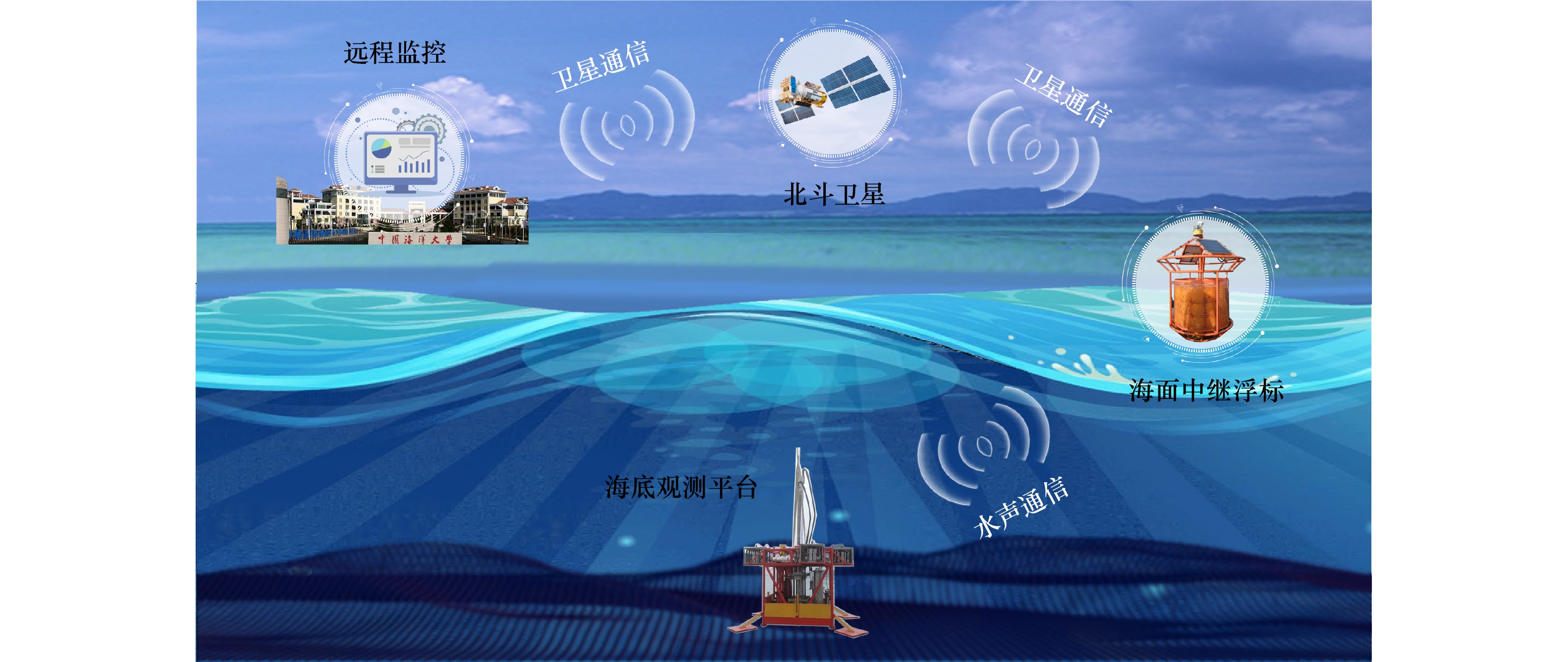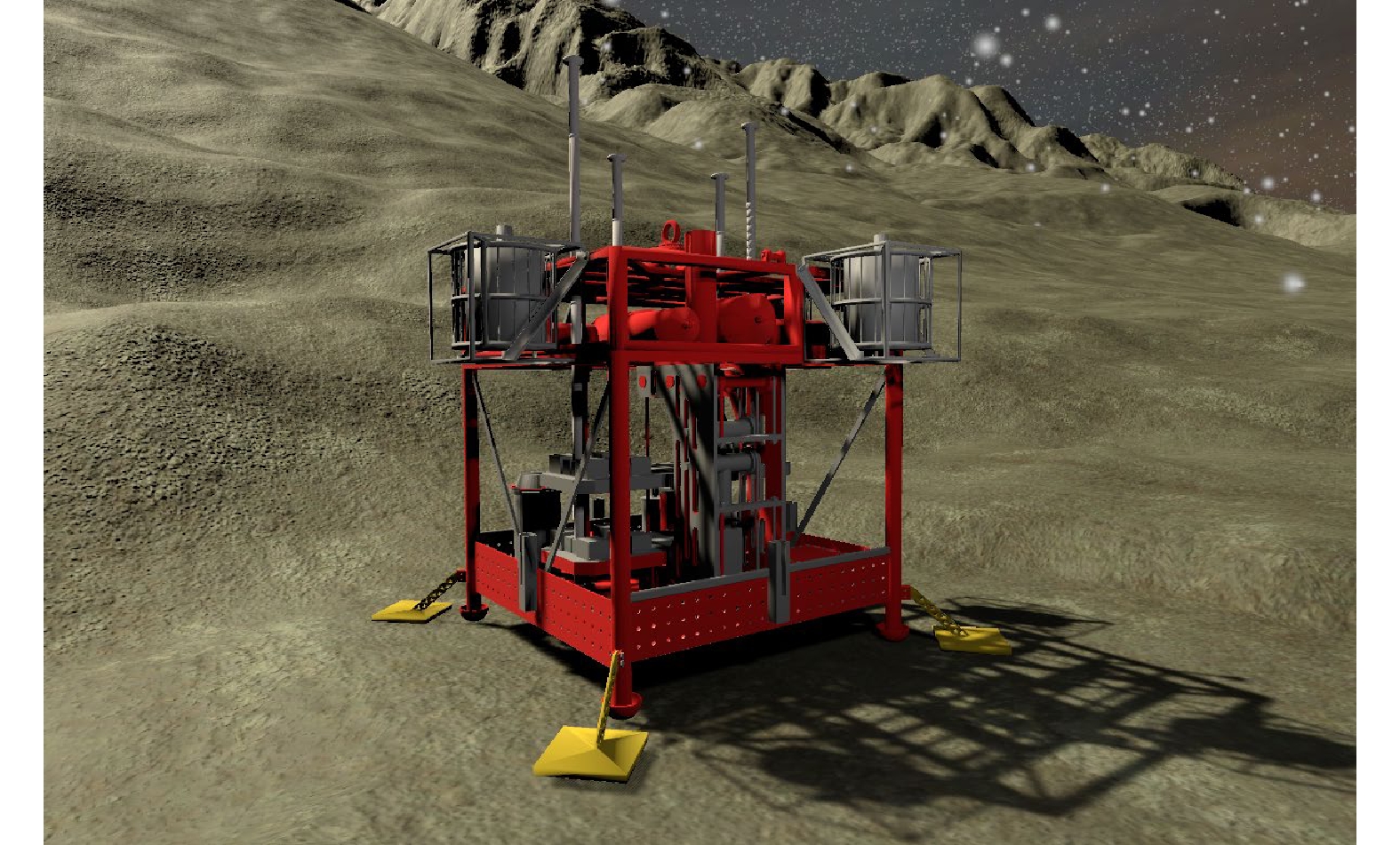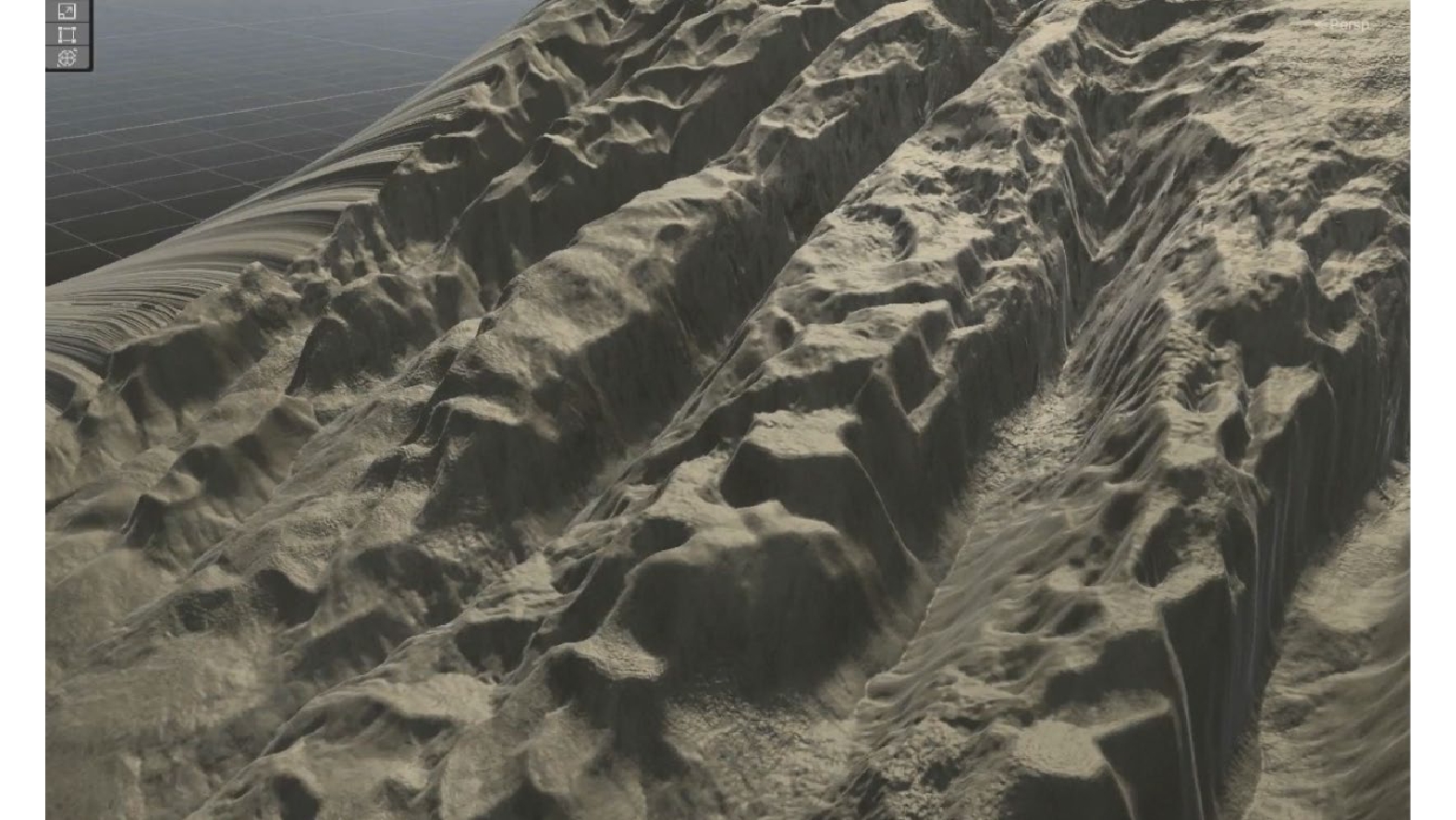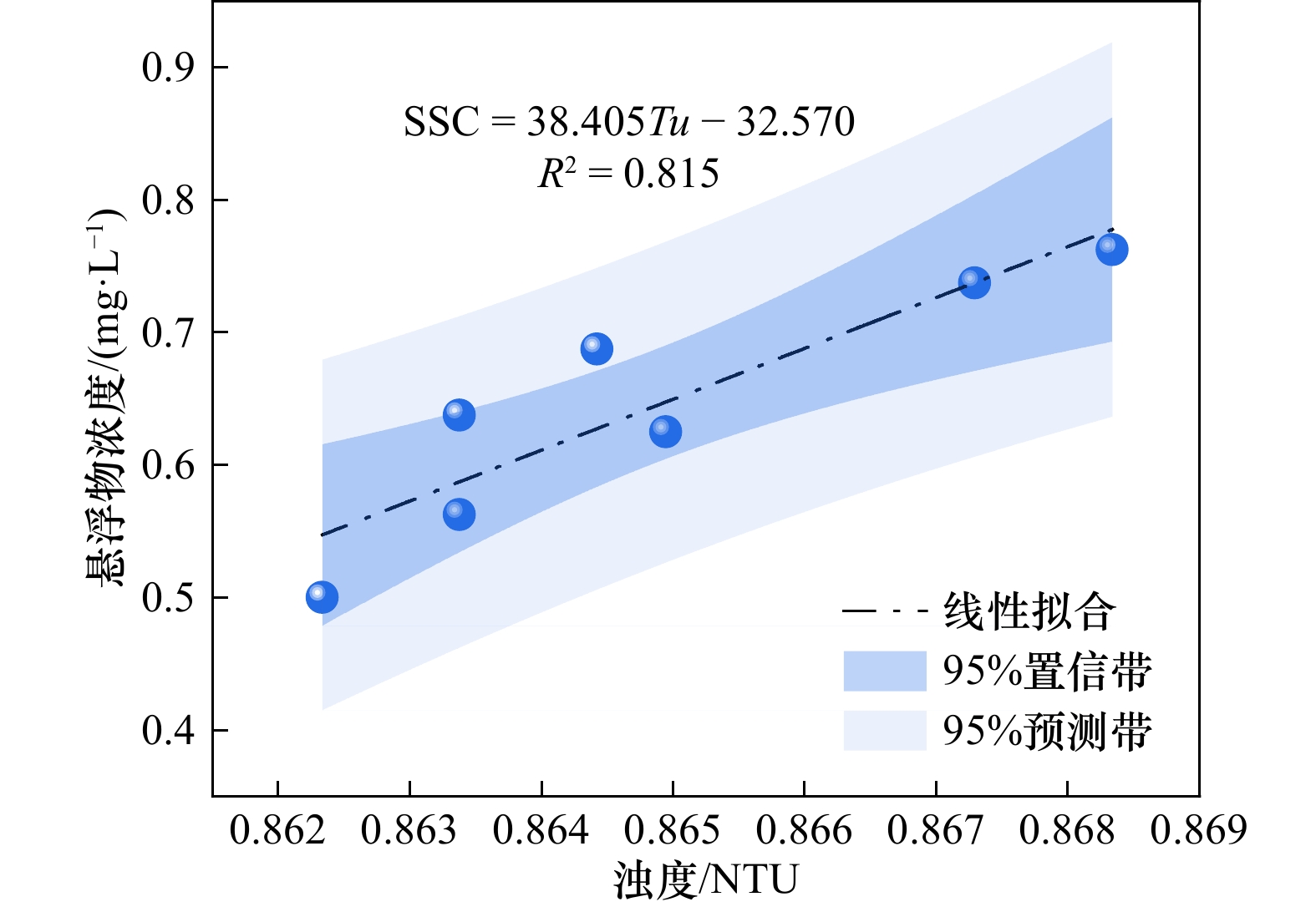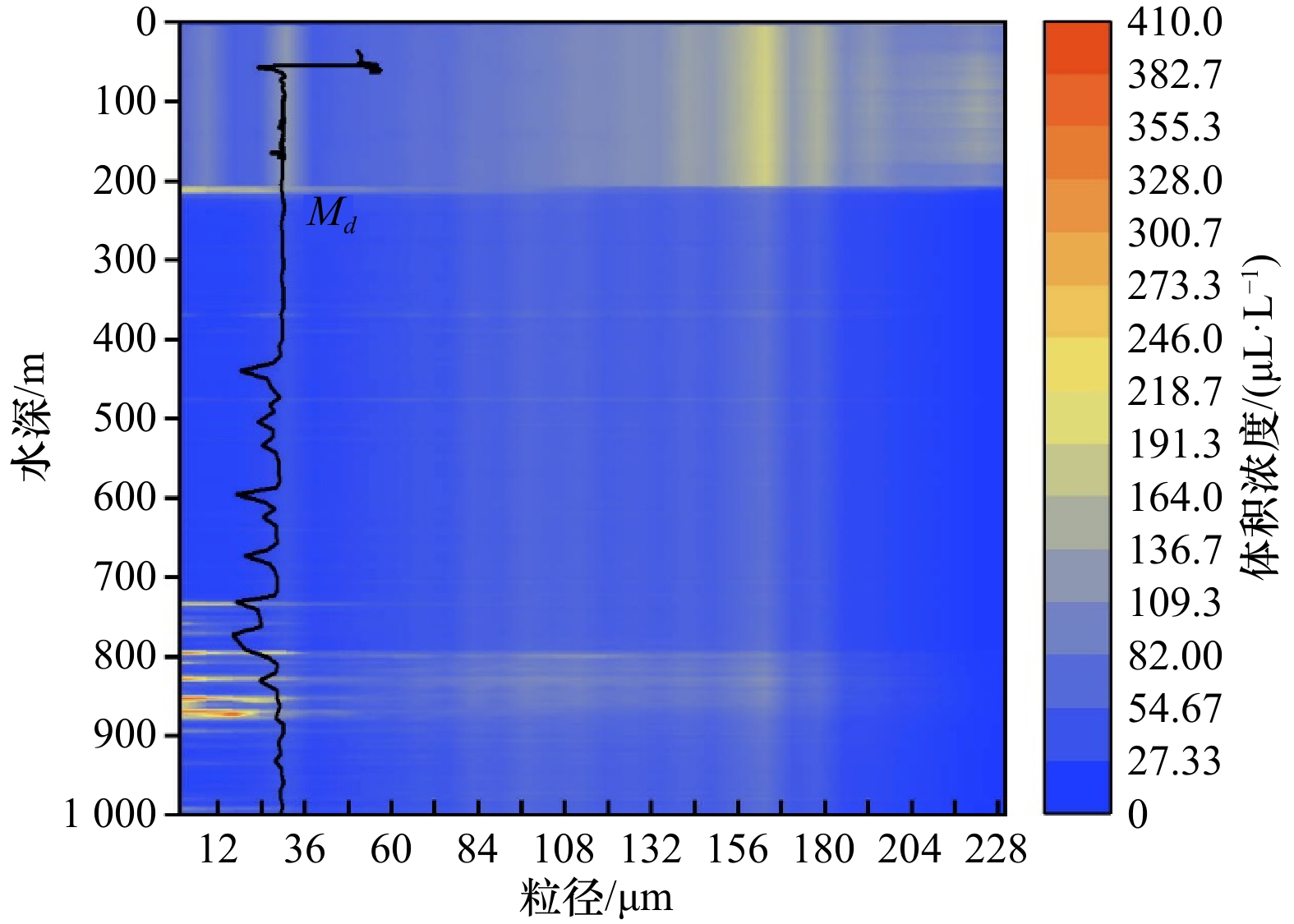Implementation and application of digital twin-based visualization technology for spatial and temporal variation of seafloor suspensions
-
摘要: 数字孪生技术构建的虚拟海洋平台,能够进一步实现海底环境监测数据的三维可视化分析。本文基于深海底长期原位监测数据,使用Unity3D技术构建出多模型融合的虚拟海洋环境,初步建立海洋工程地质环境数字孪生系统;结合MATLAB、ArcGIS数据分析技术实现智能监测、数据分析、人机交互、辅助决策等功能;研究进一步构建虚拟环境粒子系统,对南海北部陆坡神狐海域近底层悬浮物浓度升高事件进行了三维可视化分析,结果表明:在虚拟环境粒子系统中悬浮物浓度、粒子数量与聚集程度具有较大的时空差异。特别是悬浮物浓度维持在较高水平时,发现粒子间相互碰撞、重叠,并在空间中衍生了密集程度更高的微团,当悬浮物浓度进一步升至峰值时,微团数量增加并占据空间大部分体积,形成悬浮颗粒高度聚集,覆盖范围更广的悬浮物聚合体。本文基于图像分析技术,将可视化分析结果与真实海底摄像进行对比,相对误差在0.16%~2.80%范围内,具有较高的可行性。Abstract: The virtual ocean platform constructed by digital twin technology can further realize the 3D visualization and analysis of seabed environmental monitoring data. Based on the long-term in-situ monitoring data of the deep seabed, this paper uses Unity3D technology to build a virtual marine environment with multi-model fusion, and initially establishes a digital twin system for marine engineering geological environment; combines MATLAB and ArcGIS data analysis technology to realize intelligent monitoring, data analysis, human-computer interaction and auxiliary decision-making; the study further constructs a virtual environment particle system to conduct a 3D visualization and analysis of the near-bottom suspended sediment concentration elevation event in the northern part of the South China Sea. The results show that there are large spatial and temporal differences in suspended matter concentration, particle number and aggregation degree in the virtual environmental particle system. In particular, when the suspended matter concentration is maintained at a high level, particles are found to collide and overlap with each other, and the denser microclusters are derived in space. When the suspended matter concentration rises further to the peak, the number of microclusters increases and occupies most of the volume of space, forming a highly aggregated suspended matter aggregate with a wider coverage of suspended particles. This paper is based on image analysis techniques and compares the visualization results with real seafloor cameras with relative errors in the range of 0.16%–2.80%, which is highly feasible.
-
表 1 近底层悬浮物颗粒虚拟仿真粒子信息表
Tab. 1 Virtual simulation particle information sheet for near-bottom suspended particles
虚拟仿真参数名称 参数信息 悬浮物平均粒径 30 μm 悬浮物体积 14 130 μm3 悬浮物平均密度 1.48 g/cm3 悬浮物体积(1 mg/L) 3 943 mm3 悬浮物数量(1 m3) 279 021 059 传感器有效探测范围 125 cm3 空间体积放大比例 1∶4 096 000 空间体积 512 m3 单个粒子体积放大比例 1∶621 378 370 粒子体积 8 780 mm3 -
[1] 刘晓磊, 陆杨, 王胤, 等. 海洋资源开发与海洋工程地质——第二届国际海洋工程地质学术研讨会(ISMEG 2019)总结[J]. 工程地质学报, 2020, 28(1): 169−177.Liu Xiaolei, Lu Yang, Wang Yin, et al. Exploration of marine resources and marine engineering geology: summary on the 2nd international symposium on marine engineering geology[J]. Journal of Engineering Geology, 2020, 28(1): 169−177. [2] 李浩, 张侃, 李晓军, 等. 论海洋油气开采环境保护的重要性[J]. 天津科技, 2016, 43(6): 85−86, 90. doi: 10.3969/j.issn.1006-8945.2016.06.026Li Hao, Zhang Kan, Li Xiaojun, et al. On the importance of environmental protection for offshore oil and gas exploitation[J]. Tianjin Science & Technology, 2016, 43(6): 85−86, 90. doi: 10.3969/j.issn.1006-8945.2016.06.026 [3] Peng K, Li X B, Wan C C, et al. Safe mining technology of undersea metal mine[J]. Transactions of Nonferrous Metals Society of China, 2012, 22(3): 740−746. doi: 10.1016/S1003-6326(11)61239-9 [4] Zhang Y P, Zhang H W, Liu J, et al. Submarine pipeline tracking technology based on AUVs with forward looking sonar[J]. Applied Ocean Research, 2022, 122: 103128. doi: 10.1016/j.apor.2022.103128 [5] 王海平, 张伟, 李春雷, 等. 海底浅层地质灾害的高分辨率地震识别技术[J]. 海洋科学, 2014, 38(7): 103−109.Wang Haiping, Zhang Wei, Li Chunlei, et al. High resolution seismic identification of seafloor shallow geological hazards[J]. Marine Sciences, 2014, 38(7): 103−109. [6] 赵卫, 熊元凯, 宫少军, 等. 天津近海海底地质灾害类型及声学特征[J]. 海洋科学, 2021, 45(2): 119−126.Zhao Wei, Xiong Yuankai, Gong Shaojun, et al. Acoustic characteristics and types of submarine geological hazards in Tianjin offshore areas[J]. Marine Sciences, 2021, 45(2): 119−126. [7] 贾永刚, 陈天, 李培英, 等. 海洋地质灾害原位监测技术研究进展[J]. 中国地质灾害与防治学报, 2022, 33(3): 1−14. doi: 10.16031/j.cnki.issn.1003-8035.2022.03-01Jia Yonggang, Chen Tian, Li Peiying, et al. Research progress on the in-situ monitoring technologies of marine geohazards[J]. The Chinese Journal of Geological Hazard and Control, 2022, 33(3): 1−14. doi: 10.16031/j.cnki.issn.1003-8035.2022.03-01 [8] 于新生, 阎子衿, 朱明亮, 等. 自主式深海海底溶质通量原位观测站研究进展[J]. 海洋科学, 2017, 41(6): 150−161.Yu Xinsheng, Yan Zijin, Zhu Mingliang, et al. Review of seabed landers for monitoring solute fluxes in deep sea[J]. Marine Sciences, 2017, 41(6): 150−161. [9] 陶飞, 刘蔚然, 刘检华, 等. 数字孪生及其应用探索[J]. 计算机集成制造系统, 2018, 24(1): 1−18. doi: 10.13196/j.cims.2018.01.001Tao Fei, Liu Weiran, Liu Jianhua, et al. Digital twin and its potential application exploration[J]. Computer Integrated Manufacturing Systems, 2018, 24(1): 1−18. doi: 10.13196/j.cims.2018.01.001 [10] Grieves M W. Product lifecycle management: the new paradigm for enterprises[J]. International Journal of Product Development, 2005, 2(1/2): 71−84. doi: 10.1504/IJPD.2005.006669 [11] Grieves M. Virtually Perfect: Driving Innovative and Lean Products Through Product Lifecycle Management[M]. Kennedy: Space Coast Press, 2011: 1−3. [12] Piascik R, Vickers J, Lowry D, et al. Technology Area 12: Materials, Structures, Mechanical Systems, and Manufacturing Road Map[M]. Washington, DC: NASA Office of Chief Technologist, 2010: 1−2. [13] Wu Q C, Mao Y S, Chen J X, et al. Application research of digital twin-driven ship intelligent manufacturing system: pipe machining production line[J]. Journal of Marine Science and Engineering, 2021, 9(3): 338. doi: 10.3390/jmse9030338 [14] Fang X, Wang H H, Li W J, et al. Fatigue crack growth prediction method for offshore platform based on digital twin[J]. Ocean Engineering, 2022, 244: 110320. doi: 10.1016/j.oceaneng.2021.110320 [15] Coraddu A, Oneto L, Baldi F, et al. Data-driven ship digital twin for estimating the speed loss caused by the marine fouling[J]. Ocean Engineering, 2019, 186: 106063. doi: 10.1016/j.oceaneng.2019.05.045 [16] Mayani M G, Baybolov T, Rommetveit R, et al. Optimizing drilling wells and increasing the operation efficiency using digital twin technology[C]//IADC/SPE International Drilling Conference and Exhibition. Galveston: SPE, 2020: 1−10. [17] Wang M M, Wang C Y, Hnydiuk-Stefan A, et al. Recent progress on reliability analysis of offshore wind turbine support structures considering digital twin solutions[J]. Ocean Engineering, 2021, 232: 109168. doi: 10.1016/j.oceaneng.2021.109168 [18] 张磊, 郑兴周, 宋健辉, 等. 基于数字孪生技术的海洋平台工艺系统仿真模型[J]. 中国仪器仪表, 2020(12): 75−78.Zhang Lei, Zheng Xingzhou, Song Jianhui, et al. The simulation model of offshore platform process system base on digital twin technology[J]. China Instrumentation, 2020(12): 75−78. [19] 王文明, 侯春来, 武振宇, 等. 海洋无隔水管修井的数字孪生框架与可视化交互[J]. 计算机集成制造系统, 2021, 27(2): 423−431. doi: 10.13196/j.cims.2021.02.010Wang Wenming, Hou Chunlai, Wu Zhenyu, et al. Frame and visualization for digital twin of marine riserless well intervention[J]. Computer Integrated Manufacturing Systems, 2021, 27(2): 423−431. doi: 10.13196/j.cims.2021.02.010 [20] 陶飞, 刘蔚然, 张萌, 等. 数字孪生五维模型及十大领域应用[J]. 计算机集成制造系统, 2019, 25(1): 1−18.Tao Fei, Liu Weiran, Zhang Meng, et al. Five-dimension digital twin model and its ten applications[J]. Computer Integrated Manufacturing Systems, 2019, 25(1): 1−18. [21] 孙志文, 贾永刚, 权永峥, 等. 复杂深海工程地质原位长期监测系统研发与应用[J]. 地学前缘, 2022, 29(5): 216−228. doi: 10.13745/j.esf.sf.2021.9.15Sun Zhiwen, Jia Yonggang, Quan Yongzheng, et al. Development and application of long-term in situ monitoring system for complex deep-sea engineering geology[J]. Earth Science Frontiers, 2022, 29(5): 216−228. doi: 10.13745/j.esf.sf.2021.9.15 [22] 杨承志, 罗坤文, 梁金强, 等. 南海北部神狐海域浅层深水沉积体对天然气水合物成藏的控制[J]. 天然气工业, 2020, 40(8): 68−76.Yang Chengzhi, Luo Kunwen, Liang Jinqiang, et al. Control effect of shallow-burial deepwater deposits on natural gas hydrate accumulation in the Shenhu Sea Area of the northern South China Sea[J]. Natural Gas Industry, 2020, 40(8): 68−76. [23] 姜衡. 神狐海域含水合物浊流沉积体差异性对比研究[D]. 北京: 中国地质大学(北京), 2018: 14−17.Jiang Heng. Comparative study on the difference of hydrate-bearing turbidites in the Shenhu Sea Area[D]. Beijing: China University of Geosciences (Beijing), 2018: 14−17. [24] 石思思, 陈星州, 马健, 等. 南海北部神狐海域W19井天然气水合物储层类型与特征[J]. 特种油气藏, 2019, 26(3): 24−29. doi: 10.3969/j.issn.1006-6535.2019.03.005Shi Sisi, Chen Xingzhou, Ma Jian, et al. Natural gas hydrate reservoir classification and characterization in the well W19 of Shenhu Sea Area, northern South China Sea[J]. Special Oil & Gas Reservoirs, 2019, 26(3): 24−29. doi: 10.3969/j.issn.1006-6535.2019.03.005 [25] 罗云, 侯正瑜, 田雨杭, 等. 南海海底沉积物声学物理参数测定的温度和时间优化研究[J]. 热带海洋学报, 2018, 37(4): 81−88.Luo Yun, Hou Zhengyu, Tian Yuhang, et al. Optimization of temperature and time of acoustic physics parameters of seafloor sediment in the South China Sea[J]. Journal of Tropical Oceanography, 2018, 37(4): 81−88. [26] Droppo I G, Ongley E D. The state of suspended sediment in the freshwater fluvial environment: a method of analysis[J]. Water Research, 1992, 26(1): 65−72. doi: 10.1016/0043-1354(92)90112-H [27] Woodward J C, Walling D E. A field sampling method to obtain representative samples of composite fluvial suspended sediment particles for SEM analysis[J]. Journal of Sedimentary Petrology, 1992, 64: 742−744. [28] Gillard B, Purkiani K, Chatzievangelou D, et al. Physical and hydrodynamic properties of deep sea mining-generated, abyssal sediment plumes in the clarion Clipperton fracture zone (eastern-central Pacific)[J]. Elementa: Science of the Anthropocene, 2019, 7(1): 5. [29] Lokhov A S, Kravchishina M D, Klyuvitkin A A, et al. In situ measurements of the characteristics of suspended particles in the Barents sea by the LISST-deep laser diffractometer[J]. Oceanology, 2020, 60(5): 650−663. doi: 10.1134/S0001437020050148 [30] Droppo I G. Rethinking what constitutes suspended sediment[J]. Hydrological Processes, 2001, 15(9): 1551−1564. doi: 10.1002/hyp.228 [31] Droppo I G, Leppard G G, Flannigan D T, et al. The freshwater floc: a functional relationship of water and organic and inorganic floc constituents affecting suspended sediment properties[J]. Water, Air, and Soil Pollution, 1997, 99(1): 43−53. -





 下载:
下载:
